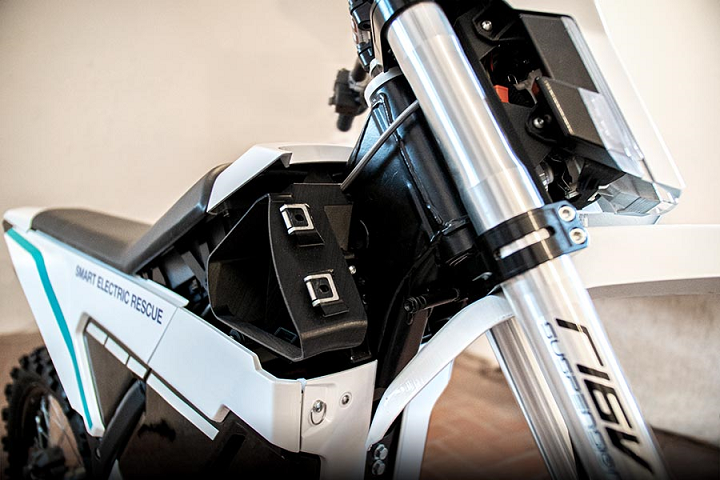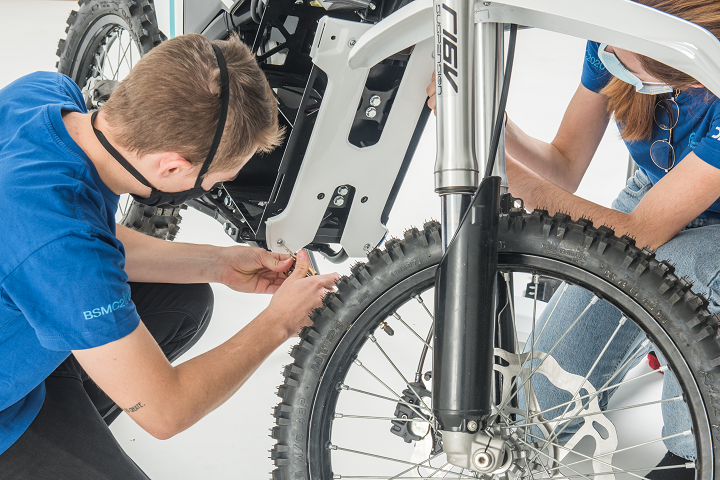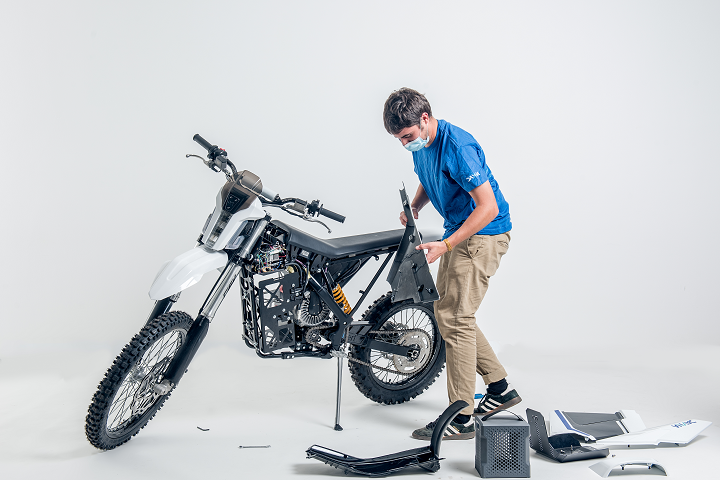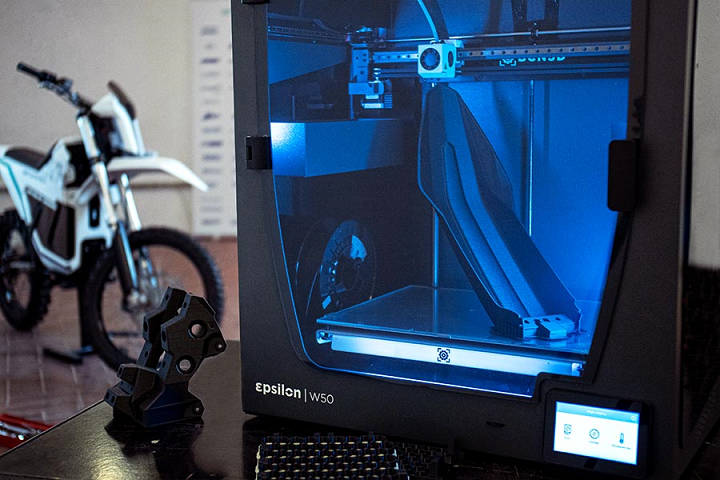We’ve seen drones and robots used for search and rescue missions, but a group of industrial design engineering and design students from Spain are using FFF 3D printing technology by BCN3D Technologies to make parts for a mountain rescue motorbike; in fact, according to the company, it’s the first rescue motorbike that features 3D printed parts at all.
Even during the pandemic, as BCN3D explained in an email, the multidisciplinary ELISAVA Racing Team at Barcelona’s School of Design and Engineering (ELISAVA) has managed to develop the project, design and 3D print 19 end-use parts for the smart, electric motorbike out of technical materials, and carry out field work with the Emergency Medical Service (SEM) and the Group of Rescue and Special Actions Group (GRAE).
The student team members aren’t just building this for fun: the project is part of their degree work. DAYNA is an intelligent, electric motorcycle specifically meant to deal with mountain rescues in hostile terrains. As BCN3D stated, DAYNA is based on a smart system that features blind-spot and proximity sensors, IoT connectivity, Bluetooth and GPS, and more, in order to help lower the response team in a rescue circumstance.
The decision was quickly made to go with BCN3D’s 3D printing expertise and know-how for the DAYNA project.
As Jacobo Mateos, Project Manager of the ELISAVA Racing Team, explained in a BCN3D case study, “With their knowledge of materials and FFF printing technology, the team at BCN3D helped us to finish defining the shape of the components to facilitate printing, as well as configure the parts to have better quality and reduce supports and problems when printing.
“It allowed us to manufacture plastic parts both in materials with reinforcement and in materials without it, which gave us a freedom when defining the shape of the parts that any other manufacturing process would not have allowed.”
The ELISAVA team chose to use technical materials for most of the 19 3D printed components, and BCN3D engineers offered their advice on said materials, as well as design optimization. ABS, with its thermal and structural resistance and low static charge, was used to print any components that come into contact with electronics or batteries, while PA was used for parts that required wear and frication resistance.
The students selected composite materials with some fiber charge, such as PAHT CF15, to print some of the more mechanically demanding parts, and glass-filled PP GF30, more lightweight than the PAHT, was used 3D print the DAYNA’s fender, which is the motorbike’s largest piece and extremely prone to breaking as a result of friction and shock.
“Thanks to fiber-reinforced materials, in this case, carbon fiber, we were able to implement the pieces we wanted, with the versatility in the shape of the piece that FFF printing allows us to do,” Mateos said.
In order to get the best results from these technical materials, the students used BCN3D’s latest 3D printer, the large-format Epsilon W50. It’s the company’s largest system, and could easily handle printing some of the higher volume parts for the motorbike, like the fork cover and the fender. Additionally, by using the printer’s Mirror Mode, which allowed them to print symmetrically mirrored designs at the same time, and water-soluble BVOH supports, they were able to save time.
“During the development process, it allowed us to iterate quickly, creating pieces that allowed us to evaluate their shape, finish, and functionality, regardless of what material or manufacturing process was used in the final part,” Mateos said about the Epsilon W50.
Development continues on the DAYNA, as the student racing team works to apply rescue functionalities and smart capabilities, and redesign a few components, to make sure the electric mountain rescue bike is up to snuff. As BCN3D explained in its email, if the DAYNA were to be commercially produced, the goal is for it to integrate information from GPS tracking devices and data from rider applications in order to analyze movement, and potentially detect an accident or a need for assistance before a person has even asked for it.
The ELISAVA team also plans to compete in the Barcelona Smart Moto Challenge this summer, and will go up against some of the best student engineering teams in the world, all competing to have their electric motorcycle named #1. The students also hope to improve DAYNA enough that it can be a viable commercial product, and 3D printing is definitely helping them on their way.
(Source/Images: BCN3D Technologies)
Subscribe to Our Email Newsletter
Stay up-to-date on all the latest news from the 3D printing industry and receive information and offers from third party vendors.
You May Also Like
Precision at the Microscale: UK Researchers Advance Medical Devices with BMF’s 3D Printing Tech
University of Nottingham researchers are using Boston Micro Fabrication‘s (BMF) 3D printing technology to develop medical devices that improve compatibility with human tissue. Funded by a UK grant, this project...
3D Printing Webinar and Event Roundup: April 21, 2024
It’s another busy week of webinars and events, starting with Hannover Messe in Germany and continuing with Metalcasting Congress, Chinaplas, TechBlick’s Innovation Festival, and more. Stratasys continues its advanced training...
3D Printing Webinar and Event Roundup: March 17, 2024
It’s another busy week of webinars and events, including SALMED 2024 and AM Forum in Berlin. Stratasys continues its in-person training and is offering two webinars, ASTM is holding a...
3D Printed Micro Antenna is 15% Smaller and 6X Lighter
Horizon Microtechnologies has achieved success in creating a high-frequency D-Band horn antenna through micro 3D printing. However, this achievement did not rely solely on 3D printing; it involved a combination...




































